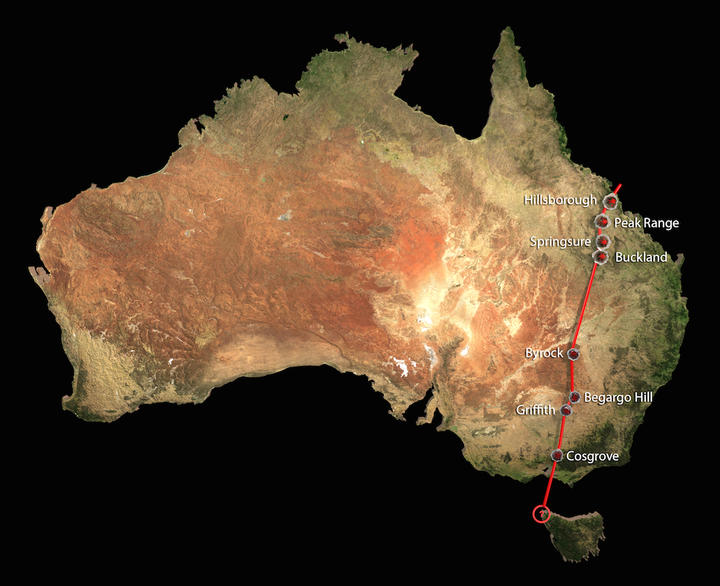
There's a gargantuan chain of volcanoes lurking beneath Australia's surface, and scientists have long been puzzled by how these volcanoes came to be, until now.
The world's longest known chain of continental volcanoes stretches approximately 1,243 miles across the continent from Cape Hillsboro in central Queensland to near Melbourne in central Victoria. It's nearly three times the length of North America's Yellowstone volcanic track.
According to a new study, published online in the journal Nature on Sept. 14, the earliest volcanoes in the chain formed 33 million years ago as the continent of Australia shifted northward over a so-called "hotspot," which is a mantle plume fed by hot rock that slowly made its way to the Earth's surface from about 1,864 miles underground.
Surprisingly, the hotspot sits away from tectonic plate boundaries, where most volcanoes are found.
"We are not the first to find these volcanoes. Most of them have been known about for at least 40 years," Dr. Rhodri Davies, a researcher at Australian National University's School of Earth Sciences and lead author of the study, told The Huffington Post in a telephone interview. "What we provide in this study is a mechanism for explaining why they are where they are ... It's the first study to explain why the volcanoes pop up where they do along this track."

Researchers analyzed the surface geology and geochemistry of 15 volcanoes in eastern Australia to determine when volcanic activity began in the region, Live Science reported. The researchers then compared that data to previous research outlining how the tectonic plate that makes up the Australian continent has shifted over millions of years.
Scientists discovered that the volcanoes weren't formed at the edge of tectonic plates -- the continent-sized slabs of rock on the Earth's surface that shift about to create mountains and earthquake zones, as well as volcanoes.
Instead, they found that the "hotspot" was responsible for all of the volcanic activity along the chain. When the plume reaches around 80 miles beneath Earth's surface it can melt, which makes the volcanic activity visible on land.
"You can think of it as a lava lamp," Davies said. "The plume rises from the core-mantle boundary, and then you get the volcanoes."
The researchers noted that their study could help scientists better understand how volcanoes form, and how mantle plumes interact with the Earth's continental crust.
"Ultimately this new understanding may help us to reconstruct the past movements of continents from other hotspots," Dr. Nick Rawlinson, professor of geophysics at the University of Aberdeen's School of Geosciences in Scotland and a co-author of the study, said in a written statement.
What else is hidden beneath your feet inside Earth? Take a journey through our planet in the "Talk Nerdy To Me" episode below.
